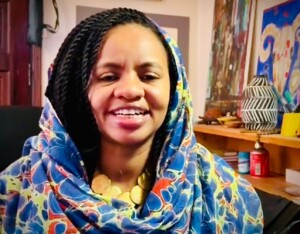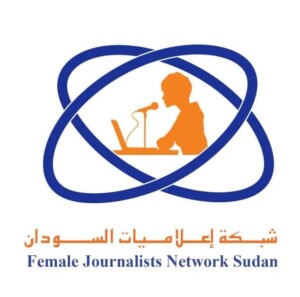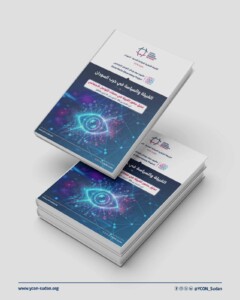Analysis: Central Bank essential to Sudan banking reform
The financial policies of the ousted regime of President Omar Al Bashir during the last 30 years have led to the inability of the Central Bank of Sudan to fulfil its role in combating inflation and supervising commercial banks.
 Central Bank of Sudan (wikipedia)
Central Bank of Sudan (wikipedia)
This paper gives an overview of the banking sector in Sudan. It traces its development since Sudan became independent in 1956, the growth of the banking industry, its role in responding to the country’s macroeconomic policies, and its role in encouraging growth and combating inflation. It assesses the damage caused in the last 30 years by the policies of the National Congress Party (NCP) that used banks to enrich its affiliates as part of their Tamkin (Empowerment) policies, which in turn led to the inability of the Central Bank of Sudan to fulfil its role in combating inflation and supervising commercial banks.
Banks play a central role in the development of every modern economy by mobilising resources for productive investment.
Monetary policies represent the left side of macroeconomic policies, and banks play a major role in driving growth by providing liquidity to other sectors in the economy; the newly introduced monetary policies of quantitative easing helped in preventing the 2008 recession in USA and Europe from turning into a global depression.
Sudan introduced Islamic banking in 1978, by opening the Faisal Islamic Bank, the first Islamic bank in the country, and ensured the bank was exempted from paying taxes for five years. The main shareholder was the Saudi financier Mohamed El Faisal. In 1984, the Sudanese government forced all banks operating in Sudan to stop using traditional lending methods, which included loans and overdrafts, and ordered them to adopt the Islamic methodologies of lending. This transformed the banks from lenders into investors. Immediately after forcing all banks to adopt Islamic banking in 1984, Dr Hassan Al Turabi (the leader of Sudan’s Islamic movement) stated that “the [Central] Bank of Sudan must find another role to play”.
The Central Bank plays an important role in determining the basic borrowing interest rate as part of its major monetary policy instruments. The credit policies which are introduced every year by the bank act as directives to the banking sector, setting lending priorities according to macroeconomic policy in order to encourage growth. At the same time, it prevents them from financing certain commodities in order to stop the monopoly which leads to rising prices of some strategic commodities which include sugar, wheat … etc.
Development of the Banking Sector in Sudan
The modern banking sector was introduced in Sudan with the opening of the Barclays Bank in 1913, during British colonisation, with Turkish-Egyptian involvement. In the early 1970s, President Jaafar Nimeiry nationalised all foreign and private banks, which gave the public sector total monopoly of the banking sector. President Nimeiry also introduced Islamic Sharia laws in September 1983. The next year, all commercial banks operating in Sudan were forced to adopt the Islamic lending methodologies – which include sale for trade (morahaba), participation (mosharaka), and speculation (modaraba).
The Egyptian National Bank turned into the Bank of Sudan in 1960, and became the Central Bank of Sudan, with its main roles being those of government banker, supervising commercial banks, and achieving government inflation targets through controlling the money supply using interest rates.
After the nationalisation of the banks in the early 1970s, the government merged some banks to strengthen their capital which left Sudan with five main commercial banks —the Bank of Khartoum, the Unity Bank, the El Nilein Bank, the Cooperative Bank, and the Sudan Commercial Bank— and three specialised banks: The Agricultural Bank, the State Bank, and Manufactural Bank. The introduction of Islamic banking in 1984 deprived the Central Bank of one of its main instruments with which to control money supply, and turned the commercial banks from lenders to investors.
In the late 1970s, Sudan started to implement the International Monetary Fund’s (IMF) Structural Adjustment Programme (SAP) policies. This included adopting free market policies, which encouraged more foreign banks, mainly from Asian and Arab countries, to open branches in Sudan. These banks included the Bank of Credit and Commerce, Citi Bank, Habib Bank, and the Middle East Bank. With this came the liberalisation of the currencies market as Sudan was using two exchange rates, an official rate for importing essential commodities such as wheat, sugar, and fuel, and a parallel rate for other commodities. Since this period, Sudan witnessed a continuing deterioration of the national currency, soaring inflation, and increasing costs of living. At the same time, the government encouraged Sudanese expatriates to send remittances to the country by offering incentives, such as customs duty exemption for car imports, and lands as part of the urban planning policies, to be paid for in foreign currencies.
After the military coup headed by Omar Al Bashir in June 1989, the foreign banks began to leave Sudan. This was in part due to the National Islamic Front (NIF) government’s stance on the 1991 second Gulf war in which the country sided with Iraq, which led to the boycotting of Sudan by oil-rich Arab countries. Later the US imposed sanctions against Sudan for sponsoring terrorism; this closed the Sudanese banking system for international financial institutions, especially when the US treasury started imposing heavy fines on banks that breached US sanctions against Sudan.
Introduction of Islamic Banking in Sudan
Islamic banking is relatively recent as the first Islamic bank was established in Egypt in 1963, when Muslims chose to restrict their banking activities to the ordinance of the Sharia. Islamic banking grew rapidly in the mid-seventies as a result of the oil boom which brought huge sums of money to Saudi Arabia and the Gulf countries, and increased the demands from Muslim investors for ways to invest without going against the Sharia codes. However, investment according to Islamic rules remained very small in comparison to the overall investments by oil states.
The only country that Islamised all its banks was Sudan. The Sudanese Muslim Brotherhood formed an alliance with the Nimeiry regime in 1977. Muslim Brothers became members of the Central Committee of the Socialist Union (the governing party during the reign of Nimeiry) and some of them even held cabinet posts. They used the ground gained by their participation to preach Islam through the Al Dawa Islamic organisation and other Muslim organisations, and to boost their Islamic movement, funded by wealthy backers from the Gulf states and Saudi Arabia. Through these actions, they were able to enrich their supporters.
In 1978, the first Islamic bank opened in Sudan. It introduced a new lending methodology, and focused its lending to members of the Muslim Brotherhood without restricting itself to central bank credit policies. Their members traded in various commodities, from charcoal to sorghum. As a result, many Islamic businessmen emerged who dominated business in the country, and controlled the import of essential commodities such as milk powder.
The Islamic lending methodology deprived the Central Bank of Sudan from one of the most important tools of monetary policy: Flexibility. This made it very expensive for business to borrow, unlike the overdraft method of borrowing in case of liquidity shortages, without restrictions such as fixed terms, as is required by the Islamic lending methodology.
The manager of the Middle East Bank branch in Sudan in the 1980s suggested that Islamic bank are traders rather than lenders, because in Islamic banking methodology banks enter as partners in business projects, sharing the profit with the borrower. They charge a high profit margin in any operation – around 25 per cent of the value. The profit is also taken in advance. Additionally, the bank puts charges on assets, to ensure it will get its money back in cases where the customer fails to return the borrowed amounts.
In the early 1980s, the Central Bank granted permission for the establishment of more than seven new Islamic banks, including the Tadamon Bank, the Sudanese Islamic Bank, the Western Sudan Islamic Bank, the Islamic Cooperative Bank, and the Northern Sudan Islamic Bank.
All these banks attracted a number of affiliates of the Muslim Brotherhood movement and most of their finances were directed to them. These banks’ lending or investment policies contributed to increased money supply and fuelled inflation. Their access to huge financial resources, along with the fact that some of their followers were part of the Nimeiry regime’s government, allowed the National Islamic Front to enter as a third large political party in the 1986 elections.
The efficiency of banks in general, and Islamic banks specifically, remains questionable. Measures can be used to assess their efficiency according to their yields, or through their contributions to support the growth of businesses and the increase of employment opportunities, or by contributing to business productivity and the Gross Domestic Product (GDP). Sudan’s experience has been very negative in terms of the banks’ support for small businesses, as most of the main beneficiaries are the already wealthy “fat cats”.
Islamic Investment Methodologies
After the introduction of Islamic banking in Sudan, a committee of Islamic clerics was set up to monitor the practices of the banks, to decide whether they comply with the Sharia, and to issue an Islamic ruling (fatwa) in cases of deviations. One of the main problems emanating from this is that clerics in general are not specialised in banking or economics. Therefore, they are unable to make up their judgements based on full understanding.
In reality, all Islamic banks apply the traditional banking interest rate, yet under a different name (calling it “profit margin”). The Central Bank of Sudan produces a periodical with the average ‘profit margins’ used by the banks on a monthly basis:

Lending represents only one part of the Islamic banking operations. The Islamic methodology puts restrictions on other transactions, for example the handling of Letters of Credit, Bills of Exchanges, and international letters of guarantees. Islamic methods also prevent banks from using savings and deposits as sources of funding for the bank’s others operations as the rules prevent the payment of interest rates. This also stops any inter-bank lending for short periods, and prevents Sudanese banks from interacting with international banks.
The real impact of the weak financial position of the Sudanese banks is that their full integration in the international financial system will be hampered to a large extent, after a possible removal of US sanctions against Sudan.
Sudan’s new transitional government must review this situation, and allow banks to use other banking methods so that they will be able to play their role regarding economic recovery in the post-Al Bashir period.
When Sudan opens up for investments, it will need to have access to the international financial systems. As the country will not have access to the international money market, unless old banking regulations change.
Sudanese Banks’ Financial Health
After the leaders of the National Islamic Front took power by a military coup in June 1989, Empowerment (Tamkin) Policies were introduced, mainly to control the country and to empower themselves financially. In order to control the banking system, they appointed affiliates to senior posts in the Central Bank of Sudan and other banks. This led to many incompetent managements as most of the newly appointed persons did not have any experience in running financial institutions. They used the banks’ resources to finance their families and followers and to control the economy without applying the normal lending principles. These practices led to huge debts and drove the banks to the edge of bankruptcy.
In the 1990s, the US State department started implementing long-term financial sanctions against Sudan. This isolated the Sudanese financial system from the international financial systems even more. For this reason, Sudanese banks were not subject to international financial health checks on capital adequacy and liquidity ratios, and compliance with national regulatory frameworks.
After the ousting of the Al Bashir regime, Khartoum seeks removal of its name from the US list of States Sponsoring Terrorism so that it can normalise its relations with international financial institutions. If this happens, the financial health of the Sudanese banking system will come under scrutiny. Drastic measures are needed to be taken to improve the banks’ financial structures, enhance their capital, and address the issues of bad debts.
According to Sudanese banking regulations for the years 2014-2017, the liquidity ratio for each bank is supposed to be at least 18 per cent of all the bank’s deposits. In most cases however, the financial statements published do not give the actual financial positions of the banks.
According to the audit report of 2017, which mainly focused on banks in which the government has over 20 per cent stakes, at least eight banks failed the liquidity ratio test: The Sudanese Agricultural Bank with 0,1 per cent, the Social Development and Savings Bank with 5 per cent, the El Nilein Bank with 8 per cent, the Industrial Development Bank, with 9 per cent, the Omdurman National Bank with a liquidity ratio of 11 per cent, the Family Bank with 13 per cent, the Farmers Commercial Bank and the Northern Islamic Bank each with 15 per cent.
Sudanese banks need to be measured according to the Basel Standards. Actions are needed to consolidate their capital and liquidity, and address the huge percentage of bad debts, in order to be able to return to the international financial systems, and open up for investments.
Audits
No regular assessment reports of the financial health of Sudanese banks have been published, as many transactions were restricted by secrecy during the rule of Al Bashir. Instead, inadequate financial statements were published.
Some of the banks published annual reports, yet without giving details about risks associated with assets or bad debts.
According to financial regulations, Sudanese banks must keep their debts less than 6 per cent of the total lending amounts, but the Auditor General stated in his 2017 report that most Sudanese banks did not comply with financial safety and best banking practices:

According to the Audit General reports regarding capital adequacy and the compliance of banks operating in Sudan, the Central Bank of Sudan restricted it to less than 12 per cent but the Aminal Resources bank exceeded that to 14 per cent.
The Central Bank’s regulations regarding risk management and enhancing internal audits required strict measures and monitoring. Yet, bank managements did not provide the needed support for their internal audit department in terms of man power to enable them to monitor all branches.
The audit general reports also show lack of compliance with many other directives of the Central Bank of Sudan regarding credit policies, money laundering, bank debts and settlements, and regulations regarding lending. Many banks faced liquidity problems and couldn’t honour their customers withdrawals’ requirements.
Sudanese Banks and Micro-Finance
As part of its strategy to combat the youth and university graduates’ unemployment, the government introduced a micro-finance scheme. As part of the Central Bank’s credit policy, they forced commercial banks to set aside 12 per cent of their credit ceiling for micro-finance projects. Major fines were set for each bank that refused to comply with the new policy.
The micro-finance scheme provided small, short-term loans (SDG 10,000-20,000) for each person to help them to establish a business. The entire project was short-sighted, because it provided small, short-term loans to people who never ran a business before, without training, and without any savings that could absorb possible losses. This turned the scheme into a debt trap instead of a gateway out of unemployment, and many young people ended up in prison as they failed to repay their debts. For such a scheme to succeed, it requires a series of steps including training in business management and marketing. Additionally, the government could possibly agree to buy the products of the projects, and provide the project owners with some subsidies – at least for a period of time.
Audit reports clearly show that most banks did not comply with the target of the Central Bank. The El Nilein Bank only achieved 2 per cent of micro-finance lending.
Consolidated Banks Balance Sheets
According to the Bank of Sudan’s Economic and Financial Statistic Review, the total lending for all banks, including lending to the government and other public sectors, was as follows for December 2018 and for June 2019 – in SDG thousands

The statistic review does not give full analysis of debt maturity and that makes it very difficult to assess the risk associated with each bank lending. Sudanese banks published financial statements do not always reflect their real position as there is a tendency for window dressing. At the same time many Sudanese audit firms lack professionalism as in the early 1990s, the new government relaxed the rules for professional auditors’ standards, which allowed many people with low standards to join.
The public sector borrowing from the banking system is very high. In total, the budget deficit in 2018 was SDG 37,836 million according to the Central Bank. That meant the government borrowed SDG 15,156 million from the banking sector (deficit finance) which fuelled inflation.
The Auditor General reports highlight many discrepancies within banks’ practices, which included breaching the Central Bank’s rules regarding liquidity ratios, and that increased the bad debt level to 22 per cent of the total borrowing. Banking sector regulations also prohibit the taking of government assets as collateral, demonstrating the failures of the Central Bank of Sudan to fulfil its supervisory role.
Commercial Banks Business
The commercial banking sector in Sudan is not following the changing environment of international banking due to many factors, including:
- The adoption of a strict Islamic system – which measures any banking product according to the Sharia, and curtails the banks’ ability to introduce many products such as credit cards and overdrafts.
- The isolation of Sudan due to the US sanctions – that removed Sudan from international banking operations such international remittance, letters of credit, and banks’ international letters of guarantee. Despite the participation of Sudan in the Society for Worldwide Interbank Financial Telecommunication code (SWIFT), the sanctions forced international banks to stop dealing with Sudanese banks and increased the cost of all international banking operations.
- Isolation from international banking systems – which increased the financial risk as it reduced the treasury management tools available to administer the financial assets and holdings of banks. For example, usually treasury management departments optimise their liquidity, make sound financial investments with access to low risk assets, and allow hedges against its financial risks. One example of the results of this is the weakening of the banks’ capital and reserves in real terms due to the deterioration of the value of the Sudanese currency and high inflation rate.
- The Central Bank’s credit policy since the late 1970s – which prevented banks from providing credit facilities to the personal sector—such as personal loans, mortgages, and car loans. This credit policy was part of the Central Bank’s policies to fight the rise of inflation by reducing the volume of money in circulation. The same thing happened after 2010. This denied many people access to finance which they needed to acquire cars or houses, and at the same time prevented banks from generating important sources of revenue.
Recently, Sudanese banks introduced new services, include mobile banking, debit cards/point of sale, but poor infrastructure limits the use of such products to only a small number of customers.
Policies need to be changed in order to enhance the role of banks in the economy. Banks should be able to inject cash, finance businesses and introduce new products, especially to the personal sector, such as credit cards, personal loans, car loans, and mortgages. Banks also need to invest in infrastructure specially in remote regions of Sudan by increasing the numbers of Automated Tellers Machines (ATM).
The Role of the Central Bank of Sudan
Central banks have traditional roles which include issuing of bank notes, acting as the government bank, acting as a custodian of cash reserves for commercial banks, acting as the lender of last resort, and being the custodian of international currencies.
Functions of central banks also include maintaining the financial sovereignty and economic stability of the country. According to the International Bank of Settlement, ‘a central bank is the bank in any country to which has been entrusted the duty regarding the volume of currency and credit in that country’. One of its primary responsibilities is ensuring the government achieves its inflation target by using its main tool (interest rate) to control money supply, or by injecting cash to stimulate the economy and encourage growth.
But since the introduction of Islamic banking methodologies in Sudan in 1984, the role of the Central Bank of Sudan has been limited to keeping accounts of commercial banks and issuing directives regarding lending policy. Its role in using interest rates to control money supply has weakened.
Since 1989, the National Islamic Front (NIF) regime politicised the role of the Central Bank as one of the tools it used to achieve its Empowerment (Tamkin) policies. They enabled their supporters to assert total control of the Sudanese economy through controlling the management of the Central Bank and other commercial banks (public and private sector). This allowed them to get finances without adopting the correct principles of lending (Cannon of Lending) which fuelled inflation and subjected banks to high risks by increasing their levels of bad debts. The over 10 years governor of the Central Bank of Sudan since in the early 2000s was at the same time chairman of the ruling National Congress Party’s economic committee. A position supposed to be held by an independent person.
The Central Bank of Sudan continued to be run by incompetent managers and for these reasons the bank significantly weakened on many levels. It was unable to play its role in stabilising the economy, manifested by increased levels of bad debts at the commercial banks, as well as hyper-inflation as the bank took to printing extra bank notes to cover government’s huge spending – which led to the collapse of Sudanese financial system.
Reform of the Central Bank is key to allow the bank to play its role in economic recovery. The reform must include amendment of relevant laws and regulations, and improved management.
The Auditor General Report for the 2017 Financial Year gives an overview of the banking sector’s actual performance and the role of the Central Bank in monetary stability and usage of government resources, fiscal/prices stability, exchange rate stability and balance of payments, and micro-finance.
The following table shows the target and the actual percentage changes for several factors:

The government’s official figures of 2017 show the GDP increased to 4.5 per cent in money terms, and the inflation rate to 25 per cent. This points in real terms to the Sudanese economy’s negative growth which has been clearly reflected in the increased costs of living and shortages of many essential goods, including medicines.
Imports and exports
Sudan’s total exports in 2017 amounted to $4,100 million, while the imports were $9,133 million in total. The balance of trade ran at a deficit of US $5,033 million, reflected in the depreciation of the value of the Sudanese Pound.

* The figure for gold exports through official channels does not reflect the actual volume of gold produced and fails to capture the magnitude of gold smuggled out of the country.
Money Supply (Money in Circulation)
One on the main roles of the Central Bank is to control money supply and the impacts of that on the economy, to ensure there is enough liquidity, and at the same time to control inflation according to the government’s targets.
But in the past 30 years, the Bank of Sudan has had two definitions of Money in Circulation: M1 includes the most liquid assets, such as cash; and M2 which includes M1 plus deposits and bonds. The growth of the money supply is significant as the amounts (in millions of SDG) in the table below show:

It should be noted that the growth in money supply in the past nine years increased 15 times, fuelled by government borrowing from the banking sector (inflationary finance). The amount in government bonds (shahama) rose from SDG 49 million in December 2010 to 65 million in June this year only, while government borrowing represents around 50 per cent of the overall banking sector lending. This is the main reason for the hyperinflation the country is now facing.
Recommendations
The government has just few options in its fight to combat inflation because the economy is in deep recession, and any deflationary measures will further worsen the situation even and turn the recession into a depression.
In the last 10 years, the International Monetary Fund (IMF) Sudan team continued to recommend the following regarding Sudan’s monetary policies.
- Tighten the monetary stance to reduce pressures on inflation and the exchange rate
- Increase exchange rate flexibility in order to rebuild foreign exchange reserves
- Continue to strengthen the financial sector, by improving banking supervision and restructuring the Omdurman National Bank, and reforming the entire banking sector.
These recommendations are still desperately needed. Banking and financial sectors reform must be at the heart of the new macro-economic policies. Sudan should move towards normalising its relation with the international financial system after the expected removal of US sanctions that have restricted the Sudanese economy for more than two decades.
Further recommendations include:
- Establish a corruption investigation committee – The 30-year rule of the National Congress Party (NCP) has witnessed corruption and fraud on a massive scale: Public funds were deliberately misused by the ruling elites, banks were used to fund the regime’s supporters without following the correct lending principles, and with no collateral security, and most loans were not used for their main purpose. This led to many customers defaulting, which in turn eroded the banks’ capital and reserves. In case of non-NCP clients, the banks immediately took legal actions against by seizing assets or putting them in jail until they paid the outstanding loans. However, clients affiliated with the NCP were treated differently and the majority of their loans were written off without the banks exercising their rights to seize their assets. This was a systematic way of stealing public funds. All of this needs to be investigated and all funds embezzled must be recovered.
- Restructure the banks and their management – Banks owned by the government need restructuring, starting with the replacement of the boards of directors and all senior management staff by non-partisan, competent managers.
- Recapitalise the banks – As all Sudanese banks, public or private, will fail stress tests in terms of capital adequacy, there is a need to recapitalise them or merge them, to strengthen their balance sheets. This can be done through turning them into public companies (PLCs) and inviting investors.
- Set up hybrid banking systems – As the current Islamic lending methodologies lack flexibility, and at the same time cost the borrower a lot, Sudanese banks must use hybrid banking systems, thus giving their customers the choice between traditional and Islamic banking.
- Encourage saving and investment – Banks must encourage savers by giving them incentives or reducing the interest rate. A secondary market for government bonds must be created to encourage savers to invest in them, and enable the government to borrow from non-inflationary sources.
- Allow banks to finance the personal sectors – By providing mortgages, personal loans, car loans, etc., and introduce credit cards systems, as Sudan is the only country in the world which does not offer such products.
- Introduce pension schemes – Through commercial banks, to give employees the choice of opting out of the government’s social security systems, as competition will lead to more efficient management of pension funds.
- Enhance technological infrastructure – Banks should be encouraged to upgrade the technological infrastructure, including electronic banking, and to expand their business to more remote areas.
- Establish inter-bank borrowing systems – To give banks access to short-term cash loans.
Disclaimer: The views and opinions expressed in this article are those of the contributing author or media and do not necessarily reflect the position of Radio Dabanga. Read the PDF version below.

Hafiz Mohamed Ismail (ACIB), former banker and financial analyst, is founder and director of the NGO Justice Africa Sudan
Radio Dabanga’s editorial independence means that we can continue to provide factual updates about political developments to Sudanese and international actors, educate people about how to avoid outbreaks of infectious diseases, and provide a window to the world for those in all corners of Sudan. Support Radio Dabanga for as little as €2.50, the equivalent of a cup of coffee.












 and then
and then